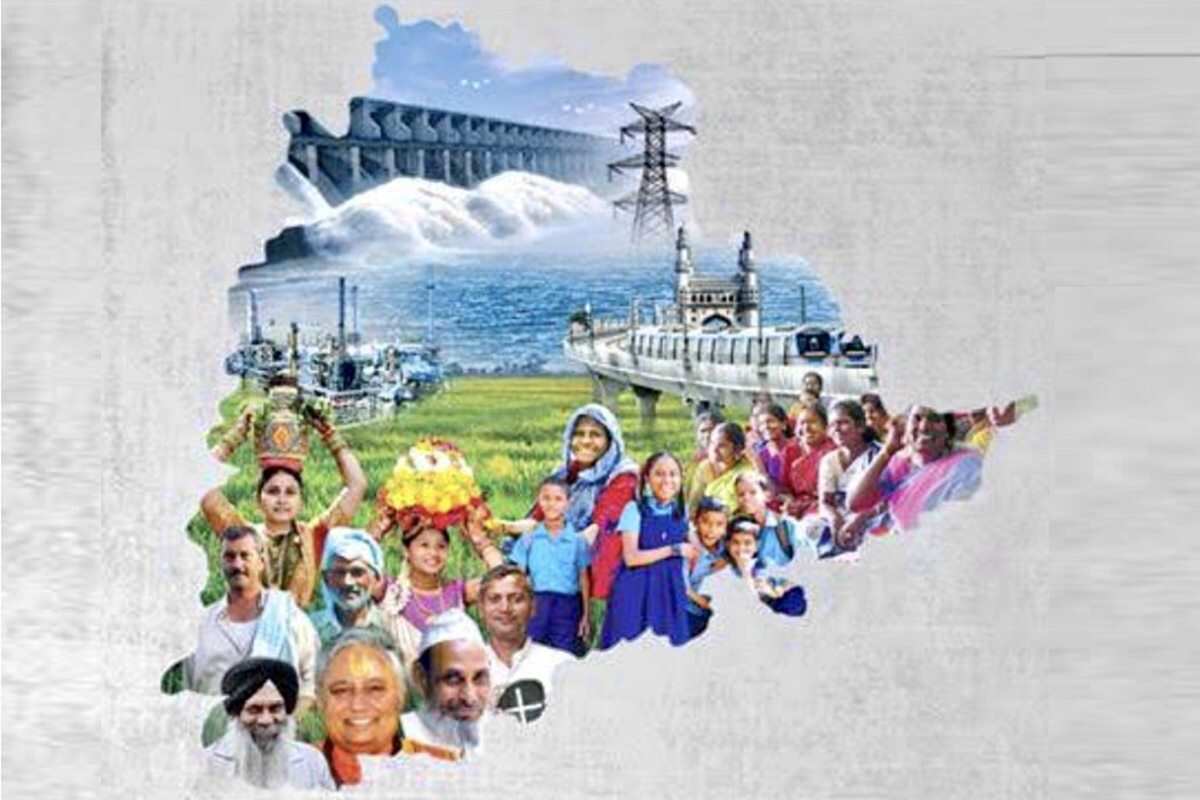Telangana Formation Day History, Significance and Important Facts: Telangana was merged with Andhra on November 1, 1956, by carving it out of erstwhile Madras.
History and Significance of Telangana Formation Day: Telangana, India’s then 29th and at present 28th state after Jammu and Kashmir was made UT, was formed on June 2, 2014. Today is Telangana’s 7th foundation day. Greeting people on the occasion, Chief Minister K Chandrasekar Rao said that the state came to existence in a parliamentary democratic way after many battles, sacrifices and martyrdom. And he was not wrong in saying so. If one takes a close look at the history, the struggle for a separate state began as early as 1955 when the suggestion to keep Hyderabad a separate State by the States Reorganisation Commission was ignored.
Telangana Formation Day History
Telangana was merged with Andhra on November 1, 1956, by carving it out of erstwhile Madras to form a united state for the Telugu-speaking population. The political leaders from the region accused Andhra Pradesh of colonising the area by grabbing their jobs and lands. They also alleged that the Andhra government has been ignoring the region and had not been investing in developing infrastructure.
Andhra Pradesh, particularly the Telangana region, witnessed a violent protest for a separate state in 1969 and a separate Andhra Pradesh in 1972. In the 1969 agitation, various social groups, students unions and government employees played a prominent role. This forced the then Prime Minister Indira Gandhi to devise a six-point formula to accelerate the development of backward areas and giving preference to local candidates in employment.
The movement for a separate state of Telangana took a political turn when the Bharatiya Janata Party (BJP) extended its support to the demand in 1997. However, the formation of Telangana Rashtra Samithi (TRS) by K Chandrasekara Rao in 2001. Before this, the formation of states like Uttarakhand, Jharkhand and Chhattisgarh spurred the demand for Telangana. During her campaign for the 2004 Lok Sabha polls, Congress president Sonia Gandhi had said that she would respect the sentiments of the people who have been demanding a separate state of Telangana.
Karimnagar emerged as a hotbed of the movement when KC Rao decided to fast-unto-death in 2009 for Telangana. He continued his fast even in hospital forcing the UPA government in the Centre to announce the formation of Telangana on December 9, 2009, only to backtrack on the issue around two weeks later on December 23, 2009. This led to a fast-unto-death by 17 pro-Telangana students in front of the Osmania University.
The Centre formed a panel on February 3, 2010, under Justice (Retd.) B.N. Srikrishna to look into a permanent solution to the issue. The panel submitted its report after an extensive stakeholder consultation which was released on January 6, 2010.
On February 3, 2010, a panel headed by Justice (Retd.) B.N. Srikrishna was formed to “bring about a permanent solution” to the statehood demand. The panel met 30 times, visited 23 districts and 35 villages and held interactions with about 100 organisations. The report did not favour bifurcation.
The Congress Working Committee (CWC) had passed a resolution recommending the formation of Telangana on July 1, 2013. Meanwhile, the agitation continued and the Centre formed a Group of Ministers to look into the issue. Based on the report from the ministerial group, the Union Cabinet approved the creation of Telangana with 10 districts in December 2013.
The Andhra Pradesh Reorganisation Bill was then tabled in Parliament and was passed in 2014. Hyderabad was envisaged as the common capital then.
Telangana Formation Day Significance
The formation of Telangana signifies the victory of the Telangana Movement which forced the bifurcation of then united Andhra Pradesh. A movement that gathered pace in the last 57 years bore fruit on June 2, 2014, fulfilling the aspirations of the people of the Telangana region. The movement not only gave a separate identity to the people of the region but also resulted in a change in India’s map showcasing the state’s boundary.



































